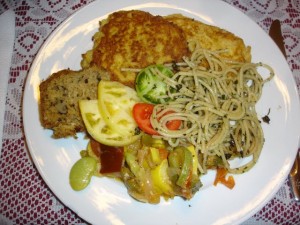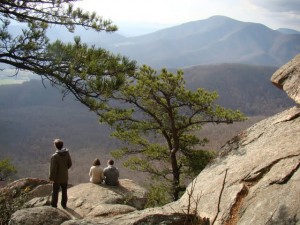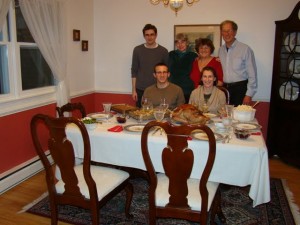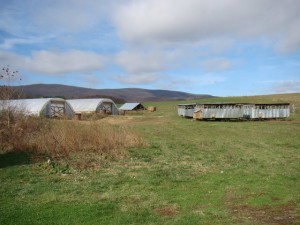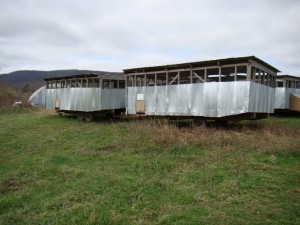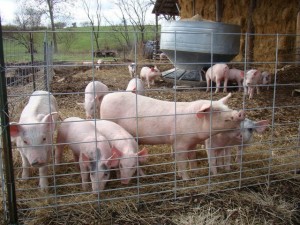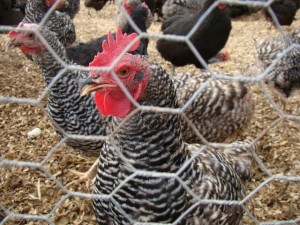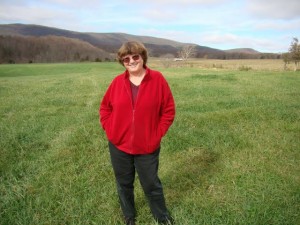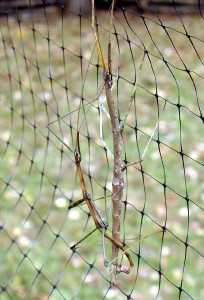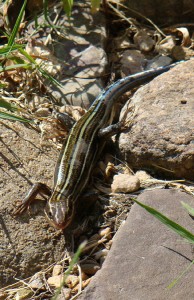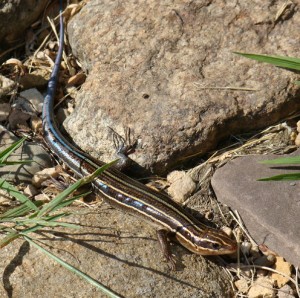Sun 29 Nov 2009
Our First Virginia Thanksgiving
Posted by Bob under Family and Friends, Our New Home, Vegetable Garden
No Comments
We had much to be thankful for at our first Thanksgiving in Virginia: our transition into retirement and a new sort of life has gone amazingly smoothly and we are loving every minute. And of course we were thankful that Eleanor and Justin came down by train from New York City, and that Nic and Alison came out from Charlottesville.
Wednesday evening I prepared a “local” meal where the key ingredient of each dish came from our garden (fresh or via the freezer): yellow squash pancakes, pesto with spaghetti, three varieties of sunroom-ripened tomatoes, zucchini bread, and a vegetable medley of garden onions, tomatoes, string beans, lima beans, peppers, yellow and green squash, and herbs (click on left picture for a larger view).
On Thanksgiving Day we took “The Plunge” trail to the overlook in the middle picture, as well as driving along the Blue Ridge Parkway and stopping on the way back for a short hike to Crabtree Falls. At Thanksgiving dinner, all agreed that the Polyface Farm turkey was the tastiest we’d ever had (also less fatty, since it got to run around in its life).
More pictures may be seen by clicking here.
